Key takeaways:
- Experiential learning enhances understanding by bridging theory and practice through active participation and real-life scenarios.
- Virtual reality (VR) offers immersive experiences, enabling students to grasp complex subjects and fostering collaboration and engagement.
- Key steps for integrating VR include selecting appropriate tools, creating a focused learning environment, and facilitating reflective discussions post-experience.
- Outcomes from using VR reveal improved retention, deeper collaboration, and strong emotional connections to the material, surpassing traditional learning methods.
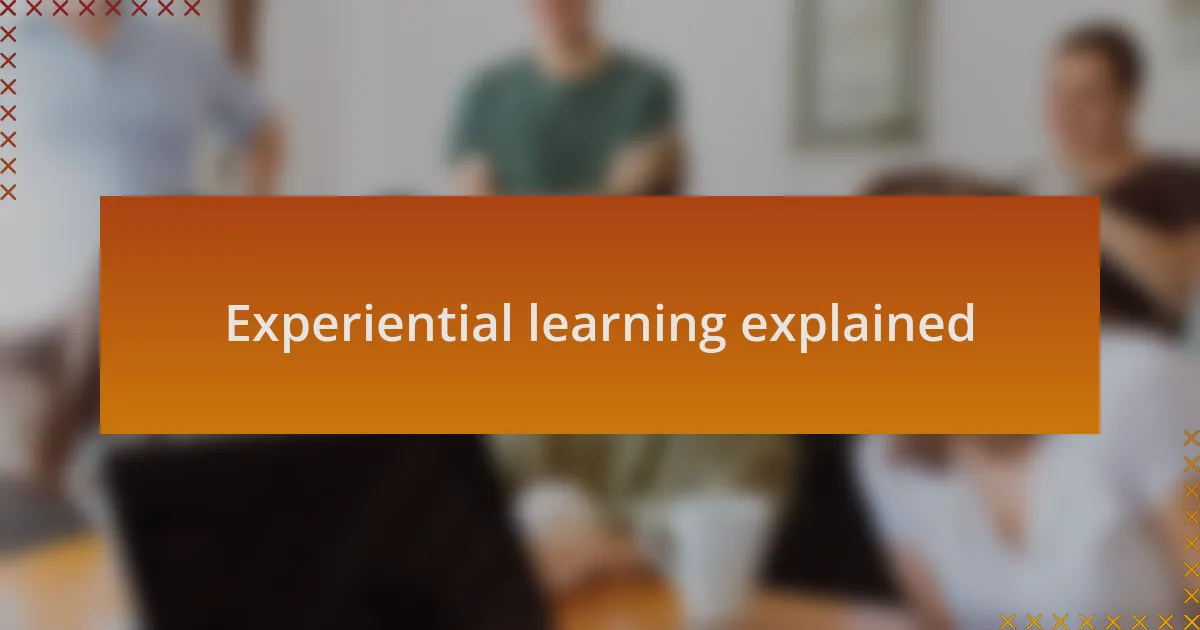
Experiential learning explained
Experiential learning is an approach where knowledge is gained through direct experience and reflection. I remember a workshop I attended, where we were thrown into a simulated crisis situation. The adrenaline rush, combined with the need to make quick decisions, vividly demonstrated how experiential learning can create lasting memories and insights.
In my experience, engaging with material in an interactive way fosters deeper understanding. I often ponder, how many times have we read a concept in a textbook but struggled to apply it later? By immersing ourselves in real-life scenarios or simulations, we bridge the gap between theory and practice, making learning not just effective but also enjoyable.
Moreover, this learning method demands our active participation, which can sometimes be intimidating. I can still recall feeling nervous during my first hands-on training session—yet, that discomfort was pivotal. It pushed me out of my comfort zone and ultimately led to growth, showcasing the profound impact experiential learning can have on our personal and professional development.
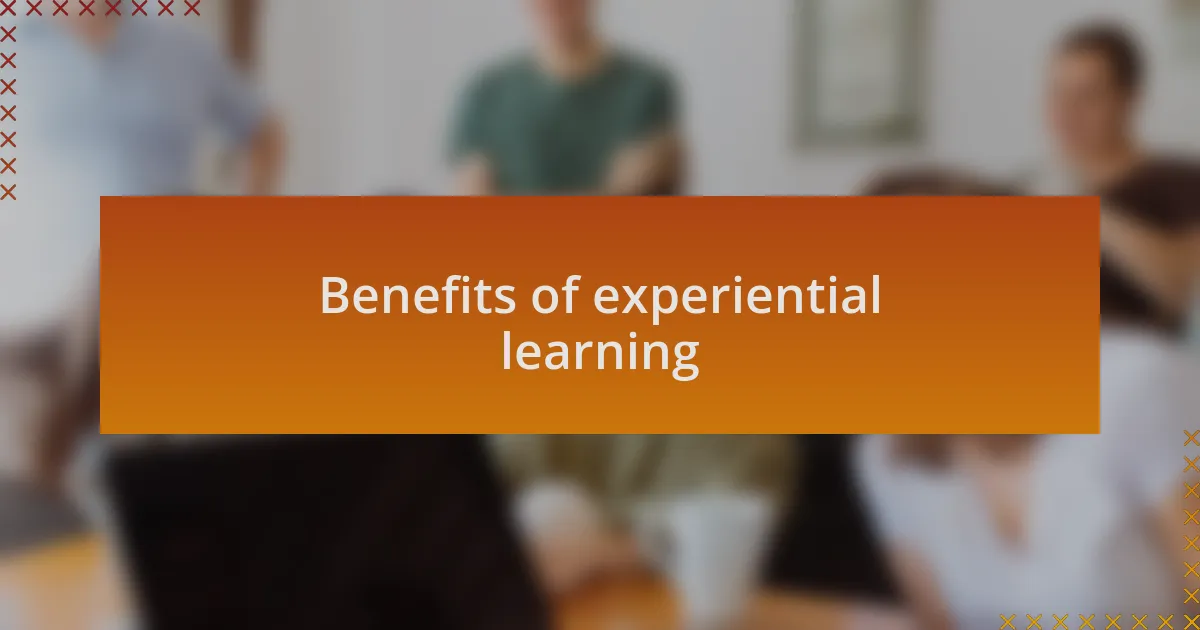
Benefits of experiential learning
Experiential learning offers a dynamic environment that actively engages learners, promoting retention and understanding. I recall a time when I participated in a project-based learning initiative. The thrill of collaborating with peers on a real-world challenge didn’t just foster teamwork; it created a sense of ownership over our learning journey. I often reflect on how that hands-on experience allowed me to internalize concepts far more effectively than any lecture ever could.
Another significant benefit is its ability to enhance critical thinking skills. I remember grappling with complex problems during a simulation exercise, where every decision had immediate consequences. It forced me to analyze situations from multiple angles, to think on my feet. Isn’t it fascinating how this kind of learning cultivates a mindset of curiosity and adaptability?
Lastly, the emotional connections formed during experiential learning can’t be understated. I sometimes think back to moments of joy in small wins during group projects or the frustrations that led to breakthroughs. Those experiences not only enriched my knowledge but also reinforced the value of resilience and teamwork. Can you recall a moment in your learning journey that transformed your perspective?
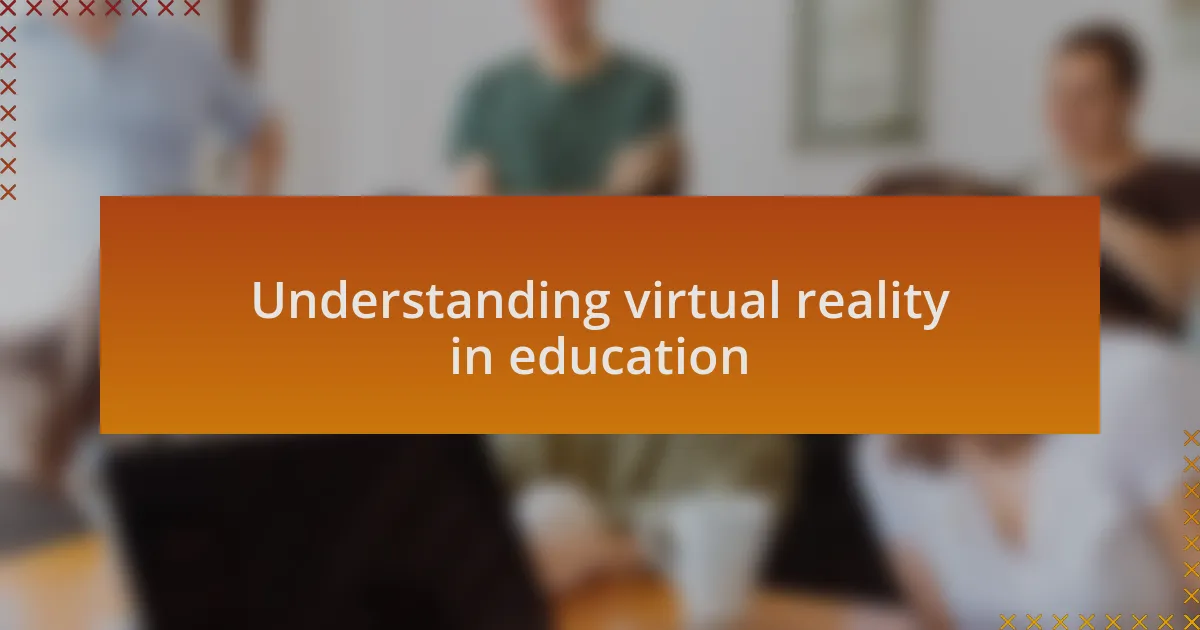
Understanding virtual reality in education
Understanding Virtual Reality in Education
Virtual reality (VR) is a remarkable tool that immerses learners in a 3D environment, making it easier to grasp complex subjects. I remember the first time I explored a historical site through a VR headset in a classroom setting. It felt like stepping into a time machine, where I could interact with artifacts and gain a deeper appreciation for history. Have you ever experienced something that completely transformed your understanding of a topic?
The application of VR in education transcends traditional boundaries, allowing students to explore concepts in ways that textbooks simply cannot offer. I once participated in a VR science simulation where I essentially became a scientist experimenting with chemical reactions. The thrill of mixing virtual substances without the fear of real-world consequences gave me the freedom to learn through trial and error. Isn’t it exciting how such experiences can ignite a passion for learning?
Moreover, VR facilitates personalized learning experiences, catering to diverse learning styles. I vividly recall a fellow student who struggled with abstract mathematical concepts; VR allowed her to visualize these ideas in a tangible way. This adaptability not only encouraged her confidence but also demonstrated the potential of VR to level the playing field in education. Have you seen similar transformations in your educational experiences?
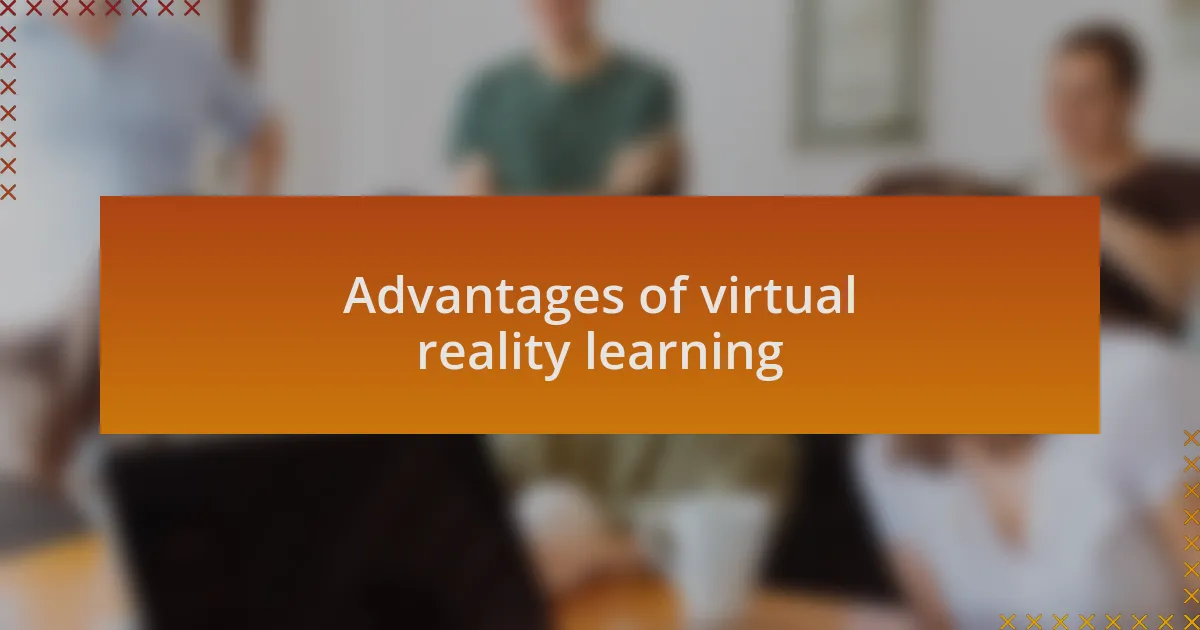
Advantages of virtual reality learning
Immersive learning through virtual reality offers a unique advantage: it engages multiple senses, which deepens retention and understanding. I remember a time when I used VR to dissect a virtual frog in biology class. The sights and sounds made the experience unforgettable, and I found myself recalling intricate details much more easily than I ever did from a textbook. Have you experienced a moment when learning felt almost tangible?
Another significant benefit of virtual reality is its ability to simulate real-world scenarios without the associated risks. For example, I once trained in a VR environment that replicated high-pressure emergency medical situations. The adrenaline rush, combined with the safe space to make mistakes, helped me build my skills confidently. How powerful is it to practice in a setting where failure is just part of the learning process?
Finally, VR promotes collaboration among students, even when they are miles apart. In my experience with a virtual classroom, I teamed up with peers from different continents to solve a complex problem. The sense of community and shared purpose was palpable, and I found that collaborating in such an immersive environment fostered not just knowledge but camaraderie as well. Have you ever considered how technology can bring us closer together, even in our learning journeys?
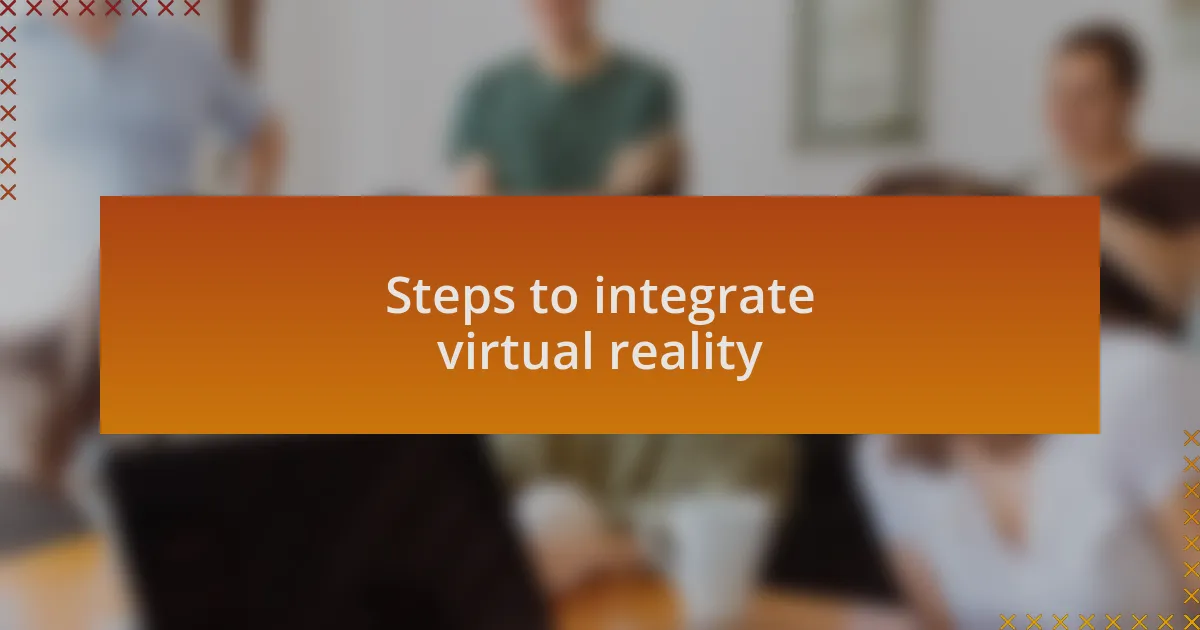
Steps to integrate virtual reality
To effectively integrate virtual reality into learning, the first step is selecting the right VR tools and content. I’ve explored various platforms and found that choices should align with your educational goals. For instance, when I chose a VR simulation for teaching physics, it was crucial that the software not only provided accurate representations but also included interactive elements. Have you ever sifted through options, only to feel overwhelmed by the choices?
Next, it’s vital to prepare a conducive learning environment. In my experience, creating a designated space—free from distractions—is essential for maximizing engagement. I recall setting up a VR station in my classroom that allowed students to immerse themselves fully in the learning experience. How does a focused environment enhance your ability to absorb new concepts?
Finally, don’t underestimate the importance of follow-up discussions and reflections after a VR experience. I’ve learned that debriefing sessions are where the real magic happens. By facilitating open conversations about what students encountered and how they felt, I found that comprehension deepened significantly. When have you noticed that sharing experiences led to greater understanding?
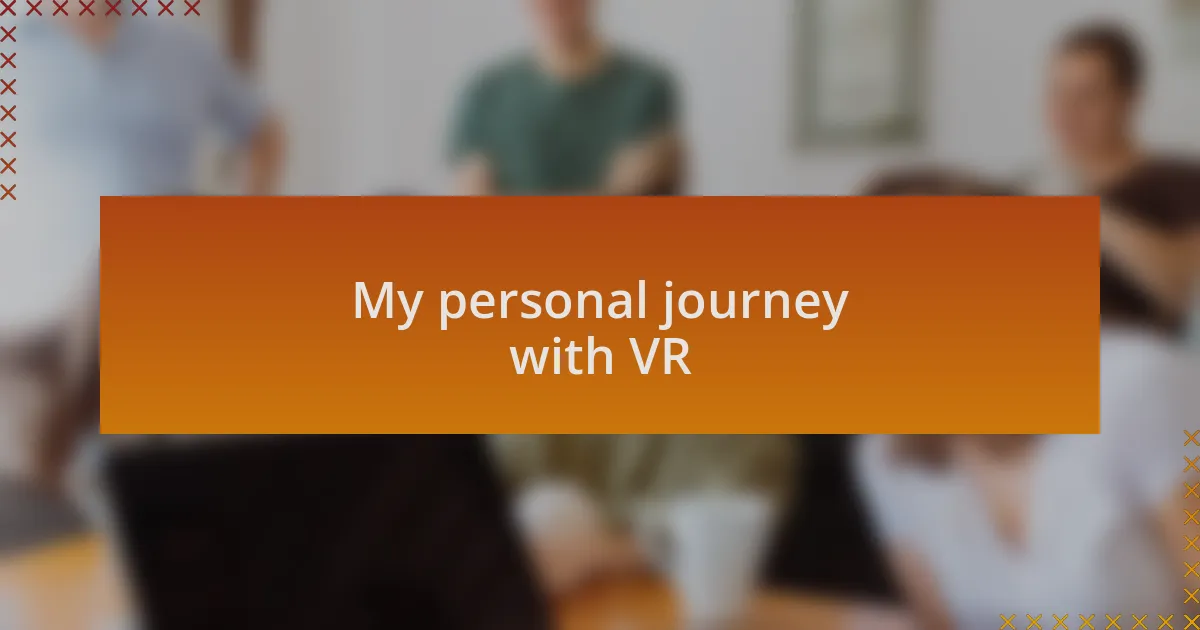
My personal journey with VR
My journey with virtual reality began when I first tried it during a professional development workshop. I remember slipping on the headset and being instantly transported into a vibrant, interactive world. The sensation was exhilarating; it made me realize how powerful VR could be for engaging students. Have you ever had a moment where technology took you somewhere unexpected?
As I delved deeper into VR, I experimented with different applications in my own teaching. There was one particular lesson where students explored the solar system. Watching their faces light up as they navigated through space was unforgettable. I could feel their curiosity shift gears; suddenly, they were not just memorizing planets but actively engaging with the content. How often do we witness a transformation like that in traditional learning environments?
I also faced challenges along the way, especially with technical issues that sometimes disrupted the flow of the lesson. But those moments taught me resilience and creativity in problem-solving. I remember a time when a VR app crashed mid-lesson, and instead of panicking, we transitioned into a creative group activity where students mapped out what they had seen. This not only maintained engagement but also reinforced their learning. Have you encountered hurdles that turned into unexpected opportunities?

Outcomes from using virtual reality
Outcomes from using virtual reality
Integrating virtual reality into learning has led to remarkable outcomes. For one, I noticed a significant increase in student retention of complex concepts. After a VR experience that allowed students to interact with historical events, they could recount details with impressive accuracy. It was as if they had lived those moments; have you ever seen students so engaged that they became the storytellers?
Moreover, VR fosters collaboration among students. I recall a project where groups of students used VR to create and share their own virtual environments. The discussions that emerged as they explored each other’s creations were vibrant and insightful. It reminded me of how collaboration encourages deeper learning—have you experienced the power of collaborative learning in your own practice?
Lastly, the emotional responses I witnessed were profound. One day, my students virtually walked through a rainforest ecosystem, and the awe on their faces was palpable. This emotional connection solidified their understanding of biodiversity in a way that traditional textbooks never could. It truly made me wonder: how often do we leverage emotions to enhance the learning experience?